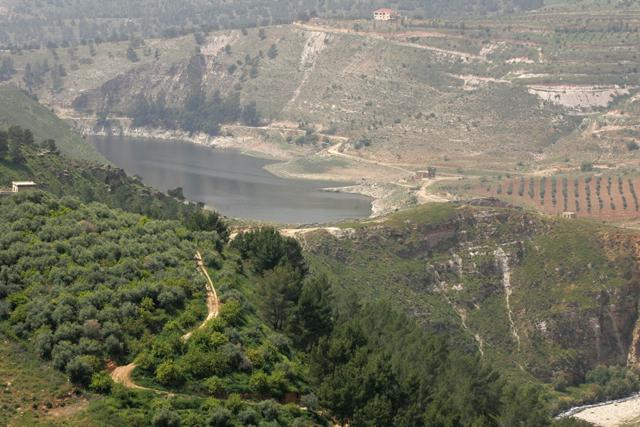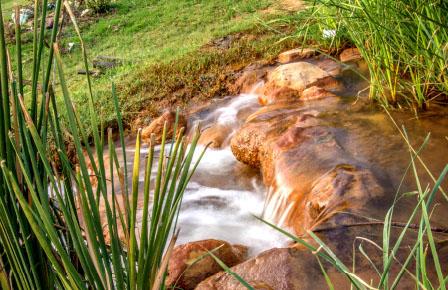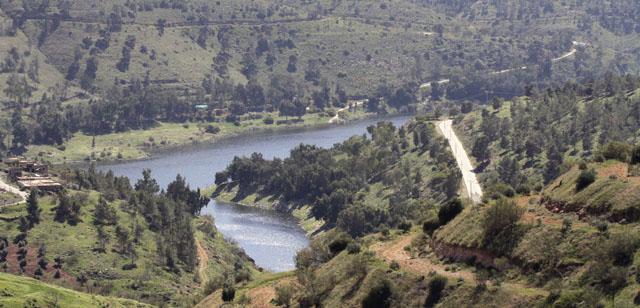You are here
Snowstorm boosts dam storage levels by 13mcm
By Hana Namrouqa - Feb 21,2015 - Last updated at Feb 21,2015

AMMAN — A total of 13 million cubic metres (mcm) of water entered the country’s 10 major dams over the weekend, a government official said on Saturday.
The dams now store 56.4 per cent of their total capacity, as storage levels increased by 5.4 per cent during the cold front, which prevailed between Wednesday night and Saturday, according to the Ministry of Water and Irrigation.
“By Saturday noon, the dams held 183.5mcm of their total capacity of 325mcm,” Water Minister Hazem Nasser said in a statement e-mailed to The Jordan Times.
During this time last year, the major dams held 142.6mcm, or 43.82 per cent, of their total capacity, according to the ministry.
“The snowstorm brought 1.769 billion cubic metres of rainfall, which is 20 per cent of the Kingdom’s long-term annual average of 8.196 billion cubic metres,” Nasser added.
Since the start of the wet season in October, the country has received 93 per cent of its long-term annual average of rainfall.
The minister noted that sand dams and ponds in the desert also stored large amounts of water during the blizzard, highlighting that this will raise the storage levels of aquifers.
“The water that was channelled into the dams over the past few days is of high quality, which will improve the quality of water stored at the dams,” Nasser said.
The ministry’s figures indicate that the 110mcm Wihdeh Dam near the Jordanian-Syria border received the highest amount of water during the blizzard, amounting to 4.2mcm on Thursday and Friday.
Two dams are now at full capacity: the 29.82mcm Mujib Dam and the 1.41mcm Shuaib Dam, according to the ministry.
The 75mcm King Talal Dam now holds 46.13 per cent of its total capacity; Wihdeh Dam has 35.63 per cent; the 8.18mcm Waleh Dam has 93.7 per cent; the 16.79mcm Wadi Al Arab Dam stores 59.22 per cent; the 3.96mcm Sharahbil Dam holds 25.39 per cent; the 55mcm Karameh Dam has 28.95 per cent; the 8.45mcm Kafrain Dam stores 45.53 per cent; and the 16.80mcm Tannour Dam has 72.92 per cent.
The highest snow accumulation registered by the Jordan Meteorological Department’s (JMD) stations was in Ajloun Governorate.
“Snow accumulation was the highest in Ras Munif, where it reached 80 centimetres (cm),” JMD Director General Mohammad Samawi told The Jordan Times.
Samawi underscored that snow accumulation could be higher in locations where the JMD doesn’t have stations.
“Snow accumulation in the south is still not recorded because there are power cuts there, but according to our data snow accumulation in Arabeh in Karak reached 35cm, 30cm in Tafileh and 20-25 cm in Shobak,” he said.
In Madaba, snow accumulation stood at 22 cm, while in Jerash it was 30cm, Mafraq 10cm, Zarqa 5cm and in Salt 17cm.
In Amman, the highest snow accumulation was registerd in Dabouq at 28cm, followed by the University of Jordan area (25cm); Muqablain (22cm); Abdoun (21cm); Sweileh (22cm); Shmeisani, Jandaweel and the Seventh Circle (20cm); and Rabieh and Marj Al Hamam (18cm), according to the JMD.
The department said a slight rise in temperatures is forecast for Sunday and Monday as the country will be affected by an upper trough.
The JMD issued warnings to the public of expected ice formation on Sunday night as well as frost in the Jordan Valley.
The country will be affected by another depression on Tuesday, according to the JMD.
Related Articles
Rainfall and snow between Wednesday and Sunday provided 19.6 per cent of the country’s long-term annual average of 8.1 billion cubic metres, a government official said on Tuesday.
The Kingdom’s 10 major dams now hold 50 per cent of their total capacity of 325 million cubic metres (mcm), a government official said on Monday.
The Kingdom’s 10 major dams now hold 51 per cent of their total capacity of 325 million cubic metres (mcm), a government official said on Sunday.



















